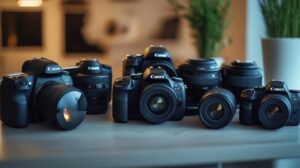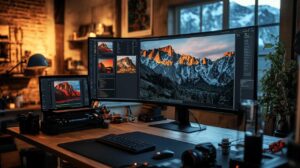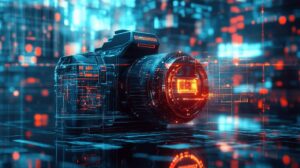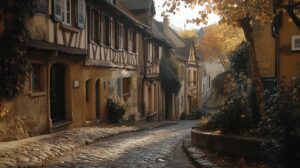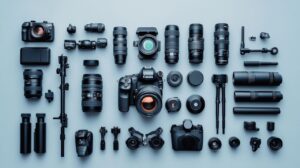Artistic vision comes to life in new ways with modern technology that transforms how we create and manipulate visual content. The fusion of artificial intelligence with photography opens unprecedented possibilities for creators across all skill levels, making professional-quality image creation accessible to everyone.
Understanding ai photography generation technology
The landscape of visual creation has dramatically evolved with the emergence of sophisticated AI tools designed specifically for image generation. These powerful systems can interpret text descriptions and transform them into vivid imagery, offering creators new methods to express their ideas without traditional photography equipment or advanced technical expertise.
Core algorithms behind photorealistic AI imagery
At the heart of today's image generation capabilities are complex algorithms like diffusion models that gradually transform random noise into coherent images. Stable Diffusion stands as a prominent example, producing highly detailed and realistic visuals by processing noise through multiple algorithmic layers. The AI Photography Generator technology analyzes vast datasets of images to understand visual patterns, enabling the creation of original content that matches specific text prompts with remarkable accuracy.
Comparing different AI photography platforms available today
The market now offers several platforms with varying strengths and features. MyImageGPT, available through Nation AI and supported by Botnation, focuses on accessibility for users without technical backgrounds. It specializes in generating images, logos, and photos from simple text descriptions. Other platforms like Dall-E have established themselves as industry leaders with distinctive capabilities in creative interpretation. Each system offers different approaches to prompt engineering, style transfer capabilities, and fine-tuning options that allow users to customize outputs to their specific visual preferences.
Creative applications beyond traditional photography
AI photography generators are revolutionizing creative projects by breaking the boundaries of conventional image creation. MyImageGPT, available on Nation AI and supported by Botnation, makes sophisticated image generation accessible to everyone without requiring technical expertise. Using advanced technologies like Stable Diffusion, these tools employ deep learning algorithms to analyze and replicate visual data from simple text prompts. The capabilities extend far beyond basic image creation, with features including text-to-image conversion, style transfer, inpainting, and the ability to train customized models tailored to specific artistic visions.
AI image generation has found its place across numerous industries including marketing, entertainment, graphic design, and e-commerce. Businesses use these tools to create high-quality visuals for marketing campaigns, while game developers generate backgrounds and character designs. The technology democratizes visual content creation, allowing more people to produce professional-grade images regardless of their artistic background.
Blending artistic styles and genres with AI assistance
AI photography generators excel at merging different artistic influences to create unique visual compositions. Using technologies like diffusion models, these platforms can imitate a wide range of artistic styles. Users can experiment with style reference features to incorporate elements from various artistic movements or combine seemingly incompatible genres into cohesive images.
The style transfer functionality allows creators to apply the aesthetic qualities of one image to the content of another. Artists can craft unique visual identities by mixing traditional art forms with contemporary digital techniques. The platforms offer multiple approaches to style blending, including direct style reference uploads and specialized AI filters. Users can refine their results by adjusting prompts, adding or removing details, changing styles, or emphasizing different elements to achieve their desired artistic expression.
Creating impossible scenes and concepts through prompt engineering
Prompt engineering has emerged as a critical skill for maximizing the potential of AI image generators. By crafting precise textual descriptions, users can guide AI systems to visualize concepts that would be impossible to photograph conventionally. The technology excels at generating surreal landscapes, fantastical creatures, and conceptual scenes that exist only in imagination.
Advanced tools like composition reference, pose reference, and inpainting enable users to maintain precise control over their creative vision. The ability to generate multiple variations quickly allows for rapid concept exploration. Users can further refine their impossible scenes through editing features like background changing, image expansion, and layer blending. These capabilities open new creative possibilities for visual storytelling, concept art, and speculative visualization that transcend the limitations of traditional photography equipment and physical reality.
Streamlining professional workflows with ai photography
AI photography generators are revolutionizing creative workflows across multiple industries. Tools like MyImageGPT and Stable Diffusion have made sophisticated image creation accessible to professionals without requiring deep technical expertise. These platforms use advanced deep learning algorithms and diffusion models to transform text descriptions into high-quality visuals, opening new possibilities for commercial applications.
Time-saving techniques for commercial projects
Creative professionals can significantly accelerate their production timelines using AI photography generators. With text-to-image functionality, designers can quickly prototype concepts that would traditionally require hours of manual work. Marketing teams can generate multiple campaign visuals simultaneously, with some platforms supporting up to 32 parallel generations. The bulk creation feature allows for mass production of variations, while inpainting and magic remover tools streamline editing processes that previously demanded extensive Photoshop work. For specialized needs, custom model training enables teams to develop fine-tuned models that consistently match brand aesthetics, ensuring visual consistency across projects. Prompt engineering becomes a valuable skill, as refining text descriptions yields increasingly precise results.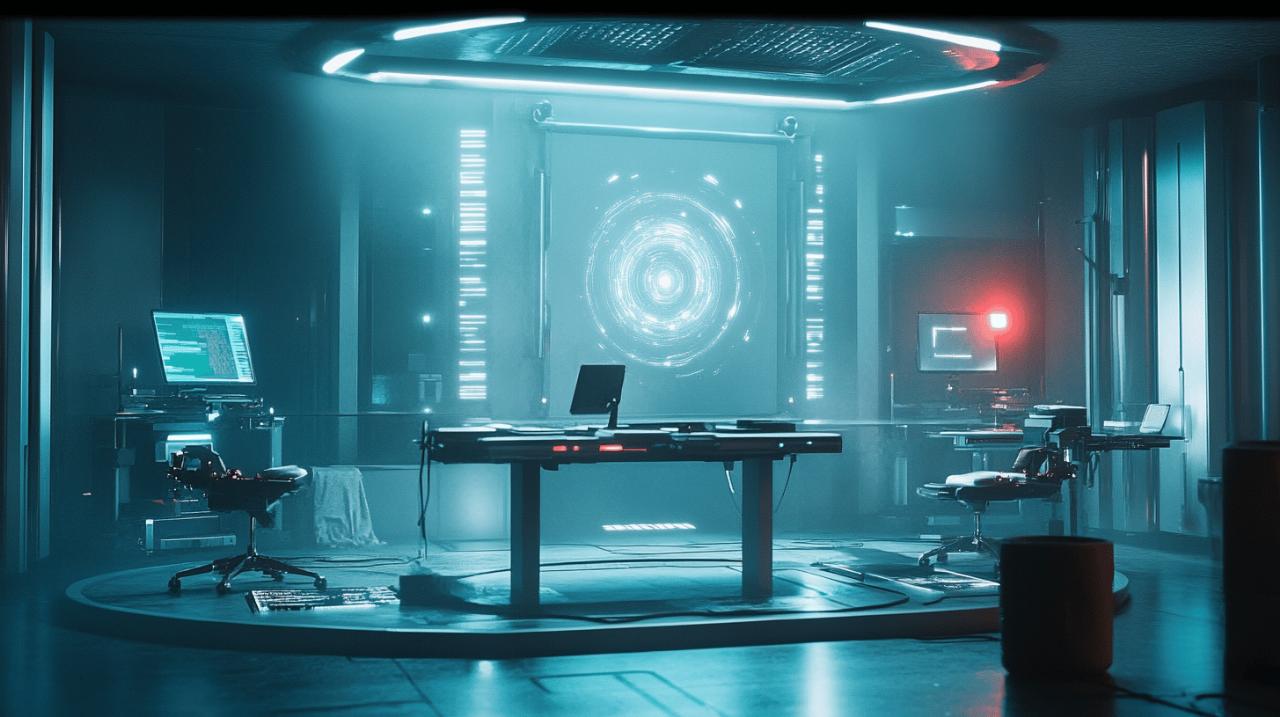
Integration possibilities with existing design software
AI photography generators complement traditional design workflows through various integration points. Style transfer capabilities allow designers to apply specific artistic styles to existing images, bridging AI generation with conventional photography. Image enhancement and upscaling features enable the improvement of lower-quality assets within current libraries. Many platforms support image-to-image transformations, where designers can use rough sketches as starting points for AI refinement. The blend image layers function works similarly to traditional compositing but with AI assistance. For comprehensive projects, creative teams can use AI-generated elements as components within larger designs assembled in standard software. QR code generators with visual integration represent practical applications beyond purely artistic uses. AI filters can be applied to existing photography collections to maintain visual consistency. These integration possibilities make AI photography generators valuable additions to established design ecosystems rather than replacements.
Ethical considerations in ai-generated imagery
AI image generation tools like MyImageGPT and Stable Diffusion have democratized visual content creation, enabling users to produce professional-grade visuals without advanced technical skills. These platforms use deep learning algorithms and diffusion models to transform text prompts into detailed, realistic images across various styles. While these technologies offer powerful creative capabilities through features like text-to-image generation, style transfer, and inpainting, they also raise significant ethical questions that creators must address.
Copyright questions and attribution practices
The rise of AI-generated imagery creates complex copyright scenarios that creative professionals must navigate carefully. When using tools like MyImageGPT or Stable Diffusion, understanding who owns the resulting imagery becomes critical. Most AI art platforms are trained on vast datasets of existing artwork and photographs, raising questions about the originality of AI-generated outputs. Creative professionals should establish clear attribution practices that acknowledge both the AI tools used and any reference materials that influenced the generation process. This transparency is particularly relevant when using custom fine-tuned models that may be trained on specific artistic styles. Many industries including marketing, entertainment, graphic design, and e-commerce now regularly incorporate AI-generated visuals, making proper attribution increasingly important as these technologies evolve and address ethical concerns regarding potential copyright infringement.
Transparency when using AI in client deliverables
Maintaining transparency with clients about AI-generated content is becoming an ethical imperative for creative professionals. When delivering projects that incorporate imagery created through text-to-image generation, style transfer, or other AI applications, disclosing these methods builds trust and manages expectations. This is especially relevant when using advanced features like bulk creation, image enhancement, or customized model training available on platforms like MyImageGPT. Clients should understand which aspects of delivered work were human-created versus AI-generated, particularly when using premium AI tools for editing with inpainting, ControlNet, or image upscaling. The ability to generate high-quality images through prompt engineering does not eliminate the need for human oversight and ethical judgment. Creative professionals must balance the efficiency gains from AI visual content creation with honest communication about process. This transparency extends to discussing limitations of the technology and the human expertise applied in directing and refining the AI outputs across marketing materials, product visuals, or artistic projects.
Future developments in ai photography generation
AI photography generation is evolving rapidly, with platforms like MyImageGPT and Stable Diffusion leading the way in making sophisticated image creation accessible to users without technical expertise. These technologies use diffusion models and deep learning algorithms to analyze visual data and transform text prompts into compelling images. The current landscape already offers impressive capabilities across multiple creative domains, but the future promises even more revolutionary advancements.
Emerging capabilities and technical improvements
The next generation of AI photography tools will likely focus on dramatically improving realism and accuracy. We're seeing early signs of this evolution in current platforms that offer features like face/anime enhancement, inpainting, and upscaling capabilities. Future systems will likely bridge remaining quality gaps, particularly in rendering realistic human features that often challenge current models. Technical improvements in diffusion models will enable more precise control over generated content, allowing for pixel-perfect adjustments rather than broad approximations.
Advanced style transfer capabilities are also emerging, with systems becoming increasingly adept at mimicking specific artistic techniques while maintaining creative integrity. Bulk creation features will become more sophisticated, enabling artists to generate themed collections with consistent style elements. The integration of image-to-video conversion suggests another frontier where still images will serve as the foundation for dynamic content creation, expanding creative possibilities across media formats.
Preparing for a hybrid human-AI creative landscape
The democratization of visual content creation through tools like MyImageGPT is reshaping how we think about creative production. These platforms are eliminating technical barriers that previously limited who could produce professional-grade visuals. For creative professionals, the focus is shifting toward prompt engineering skills and understanding how to guide AI systems effectively.
Custom model training represents a significant step toward a hybrid creative workflow. Current offerings allow users to fine-tune models to their specific artistic vision, with premium plans offering up to 8 new custom fine-tuned models monthly. This suggests a future where creative professionals maintain their unique aesthetic while leveraging AI for execution and iteration. Industries including marketing, entertainment, graphic design, and e-commerce are already integrating these tools into their workflows, using AI for everything from campaign visuals to product imagery and character design.
The growing communities around platforms like MyImageGPT, with active Discord channels and resource sharing, indicate the emergence of collaborative ecosystems where human creativity and AI capabilities enhance each other. Ethical considerations regarding copyright, authenticity, and proper attribution will need to be addressed as these technologies mature. Creators who embrace these tools while developing distinctive creative direction skills will likely thrive in this evolving landscape where AI handles technical execution while humans provide creative vision.

